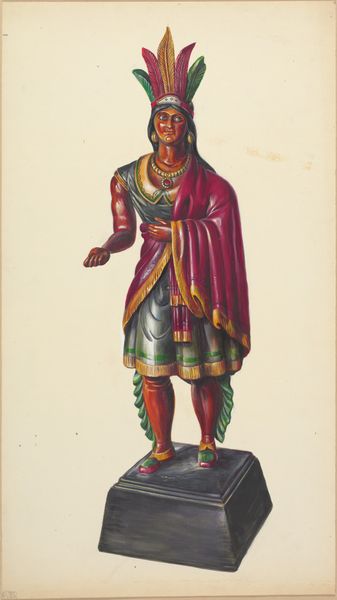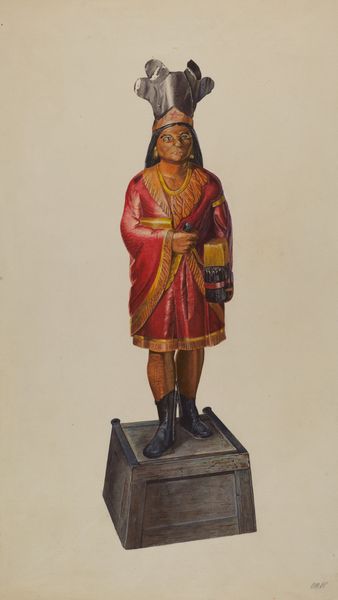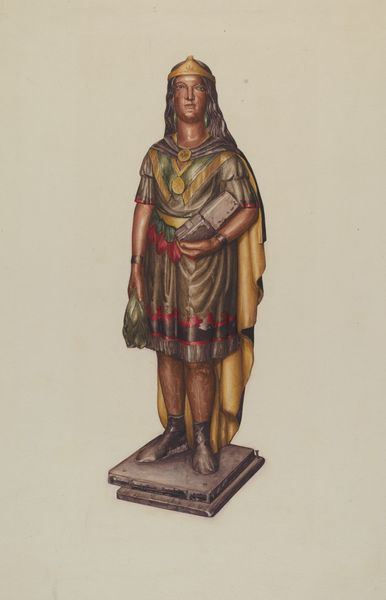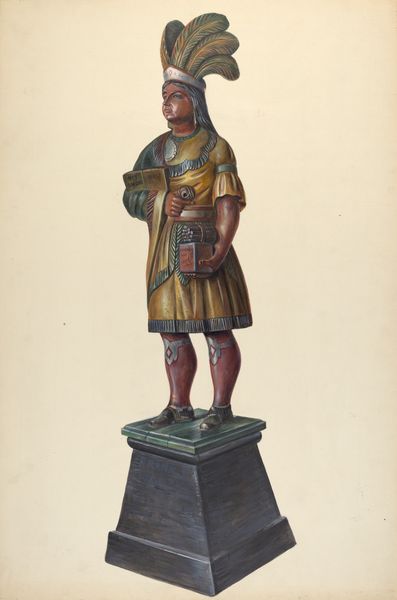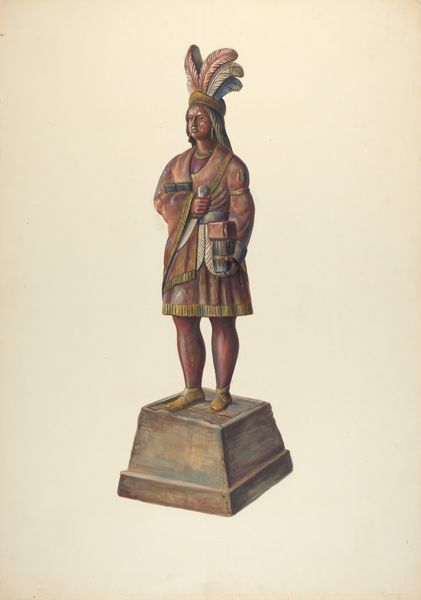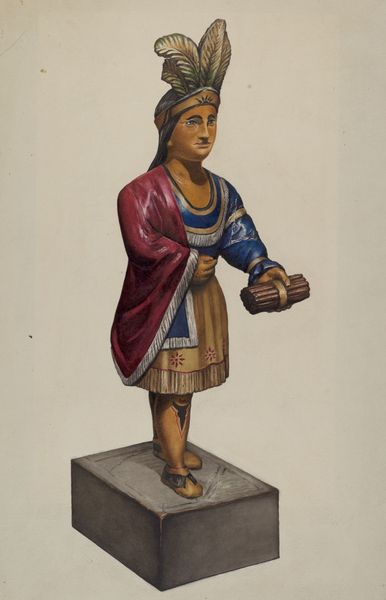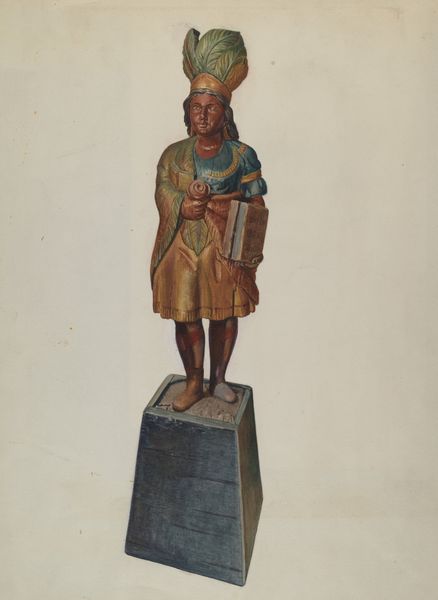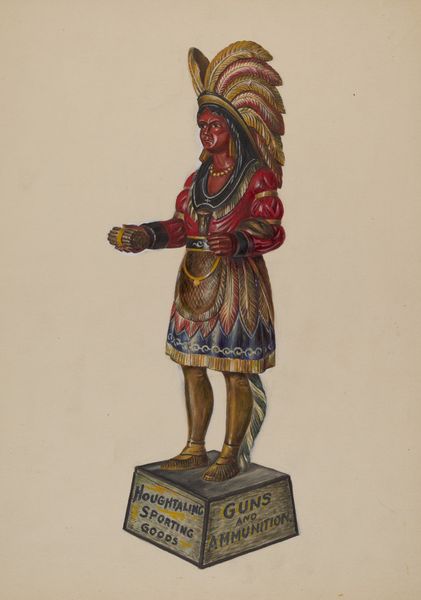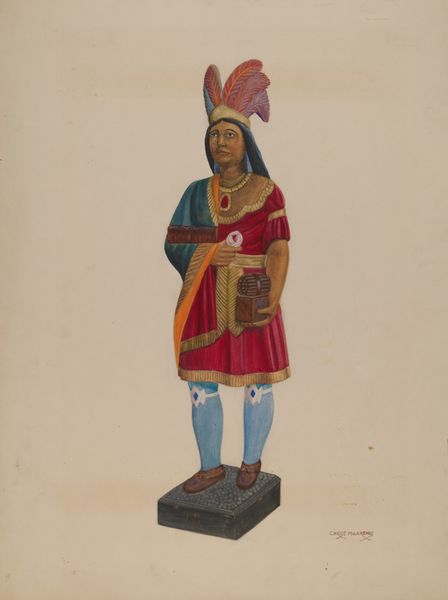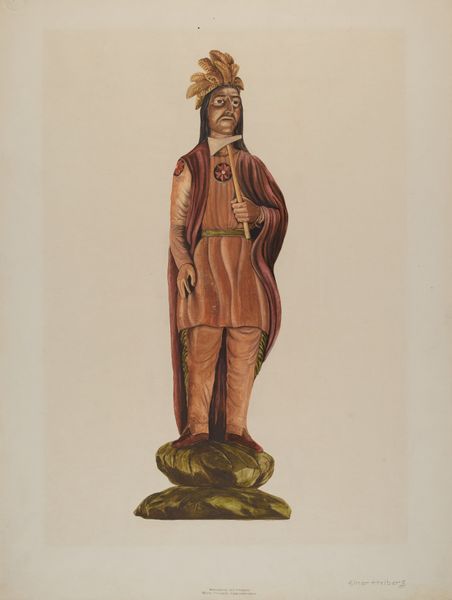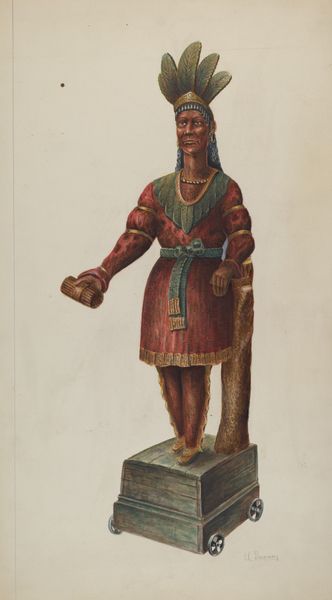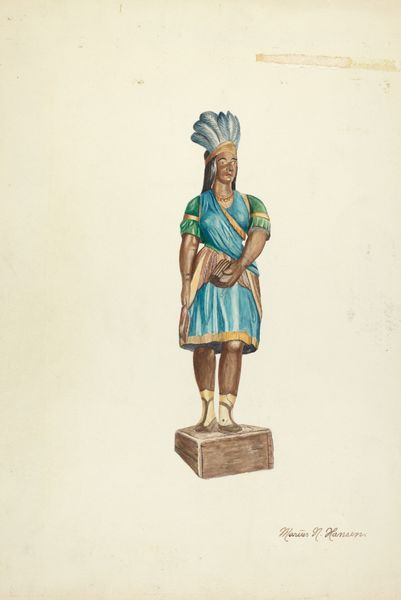
drawing, paper
#
drawing
#
sculpture
#
charcoal drawing
#
figuration
#
paper
#
oil painting
#
portrait drawing
#
watercolour illustration
Dimensions: overall: 57.8 x 34.3 cm (22 3/4 x 13 1/2 in.)
Copyright: National Gallery of Art: CC0 1.0
Curator: Before us we have V.L. Vance's “Cigar Store Indian,” a watercolor rendering completed around 1941. Editor: It’s deceptively grand for watercolor. The detail and coloring almost suggest an oil painting; it projects such a defined presence, standing almost defiant. Curator: Indeed. Vance masterfully captures the details of the original wooden sculptures. Note the use of light and shadow, the considered rendering of each element, especially within the subject's garments. There's almost a tension between the graphic depiction, which flattens the figure, and the careful gradations that create depth. Editor: Speaking of presence, one cannot ignore the troubling history. "Cigar Store Indians", mass-produced as promotional figures outside tobacconists, exploited and misrepresented Indigenous peoples to sell goods. They served as a visible reminder of the colonial exploitation and cultural appropriation rampant during that period. Curator: That’s absolutely right, and it’s vital context for approaching the artwork. I am intrigued how Vance recreates a sculptural form via watercolor, adding another layer of mediation. The interplay between subject, medium, and historical context complicates simple interpretation. It begs questions about representation itself. Editor: Precisely. Vance’s act of rendering this in watercolor invites contemplation on cultural perceptions and misperceptions and makes it available for consumption as "art". Perhaps the image offers an opportunity to reassess those complex relationships. The fact that it’s watercolor lends an aura of nostalgia and reflection on that controversial legacy. Curator: A poignant observation. It becomes clear that “Cigar Store Indian” functions as a multilayered composition. Its power exists within its careful visual construction as well as the questions it provokes surrounding cultural history and identity. Editor: I concur; it’s unsettlingly beautiful and provocative all at once. Curator: I've really come to appreciate how the rendering holds together as a statement in its own right, regardless of how you look at it. Editor: As have I, particularly regarding how art grapples with legacy.
Comments
No comments
Be the first to comment and join the conversation on the ultimate creative platform.
